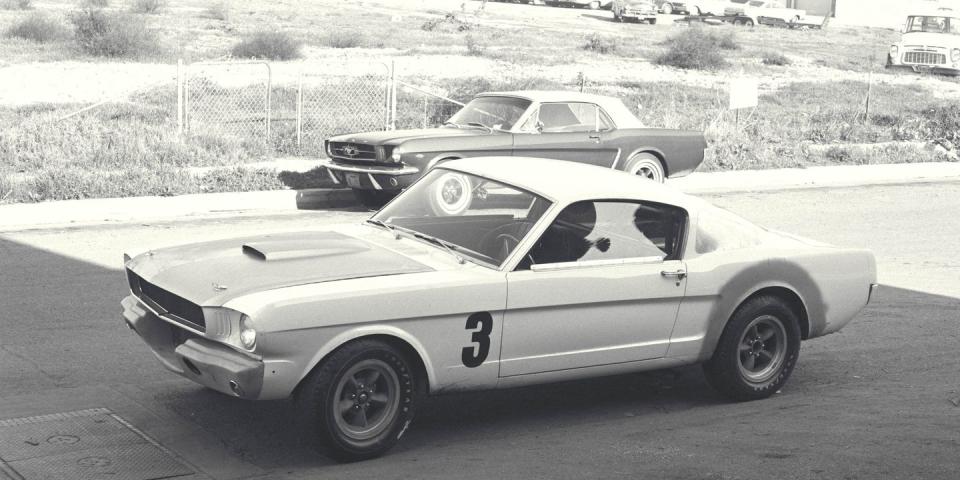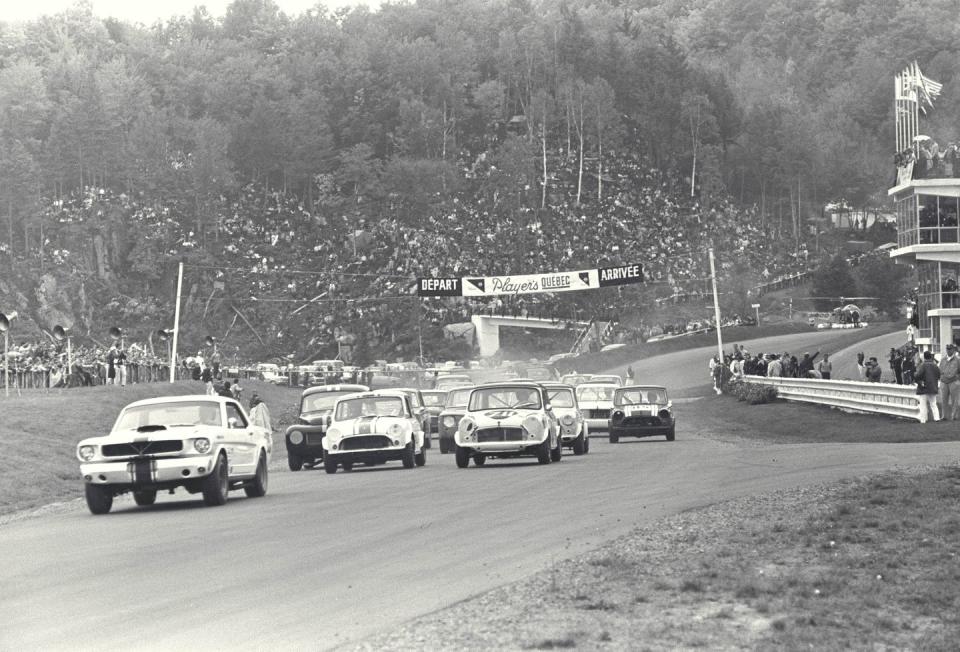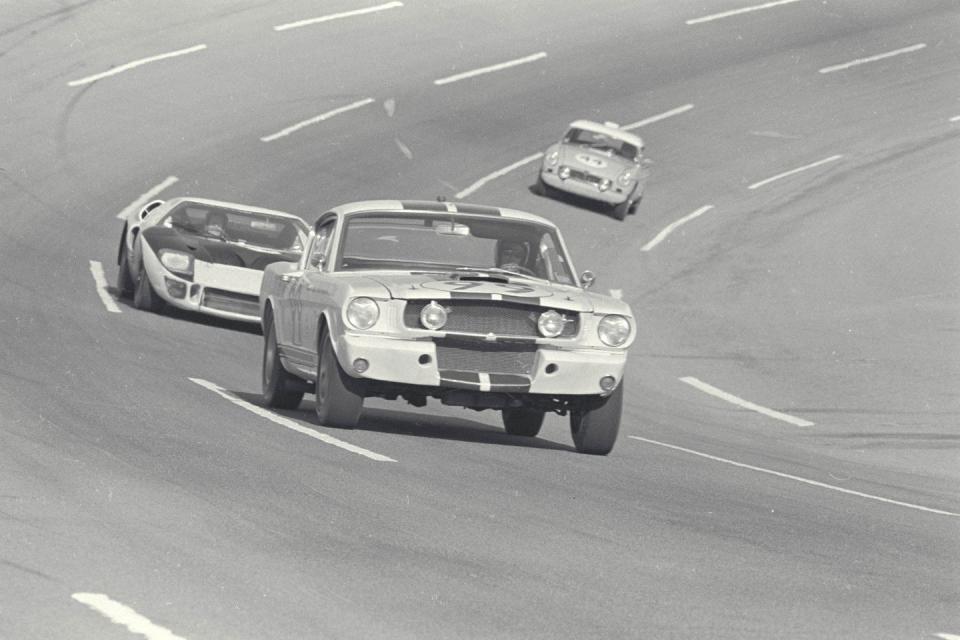Creating Shelby’s Original GT350R: Addition Through Subtraction Adds Up to a Legend

Less than two years after it was introduced in April 1964, Ford had sold over one million Mustangs. Of those, only 36 (maybe 37) were Shelby GT350R models built to race. Those three dozen cars rode horribly, rattled in terrifying ways, had obnoxious and load exhaust systems, their fuel economy sucked and each cost about twice what a regular Mustang did. All the things that made the Mustang a useful daily driver was missing. What was left was awesome.
“We sometimes find it difficult to know when to take Carroll Shelby seriously,” wrote Road & Track upon encountering the GT350 (non-R) for the first time. “He’s a great kidder. He has been known to put effort into staging a really elaborate stunt than most people will to get rich. Therefore we’re never really sure whether what he does is for real or is simply a result of his far-out whimsy.”

Shelby’s Ford whimsy was triggered by the compact, lightweight and powerful “Windsor” small-block V-8 introduced for use in the new, midsize 1962 Fairlane line of two-doors, four-doors and wagons. Replacing the awkward and lazy “Y-Block” V-8, the Windsor could, Shelby was sure, slide into a feathery European sports car and produce a capable race machine. That European sports car was the AC Ace and the resulting mutant hybrid was the Shelby Cobra.
So even before there was a Mustang or a GT350 or the R, Shelby was already racing the engine used in all of them.
Therefore, in creating the GT350 during 1965, Shelby decided to leave Ford’s factory warranted, “High Performance,” 271-horsepower, 289-cubic inch Windsor V-8 pretty much alone. The significant power bump coming the addition of a 715 CFM Holley four-barrel carburetor on a cast aluminum high-rise manifold, exhaust headers, Glaspak mufflers and an oversize oil pan. Those bare, external tweaks were enough, claimed Shelby, to boost total output to 306 horsepower.

Most of the rest of the mechanical substance of the GT350 was re-purposed stuff scavenged from the Ford production parts bin. The Borg-Warner T10 four-speed manual transmission was a regular Mustang production option. The nine-inch solid rear axle was fitted with a Detroit Locker differential and used the big drum brakes off station wagon models. Up front were 9.5-inch diameter disc brakes. Koni shock absorbers were added at all four corners, a one-inch diameter anti-roll bar was fitted to the front suspension, the power steering was quickened and enhanced with a new idler arm and Pitman linkage, the suspension was lowered and stiffer springs used. The rear seat was ditched and a plastic shell filled its space while the heavy steel hood was replaced by a fiberglass replica with hood pins. And between the front shock towers was a “Monte Carlo” bar swiped from export model Mustangs that stiffened the structure up noticeably.
The GT350 wasn’t quite a racer, but it was ready to race. The R-model wasn’t a radical upgrade from the street machine, it was more like a nudge.
Like all GT350s, the R models started their lives at Ford’s assembly plant in San Jose, California – near the center of what would soon become Silicon Valley. The Mustang 2+2 fastbacks destined to become GT350Rs came out of San Jose missing their steel hoods, sound deadening, Mustang badges, side glass, undercoating, seam sealant, heater, rear glass, gas tank, door panels, headliner and anything covering the bare steel floor. They were the raw essence of Mustang; a sheetmetal box with a few of the right pieces to race.

 Yahoo Autos
Yahoo Autos 